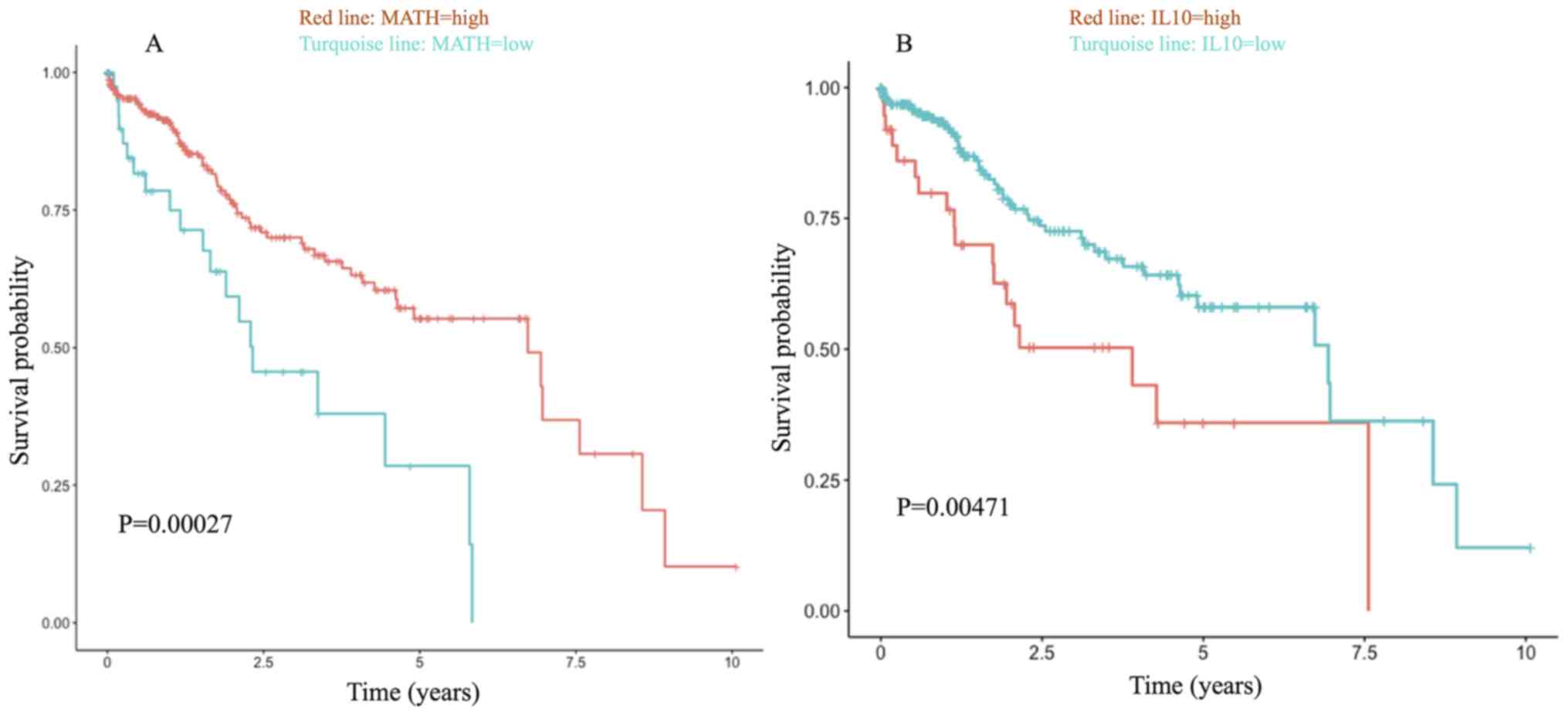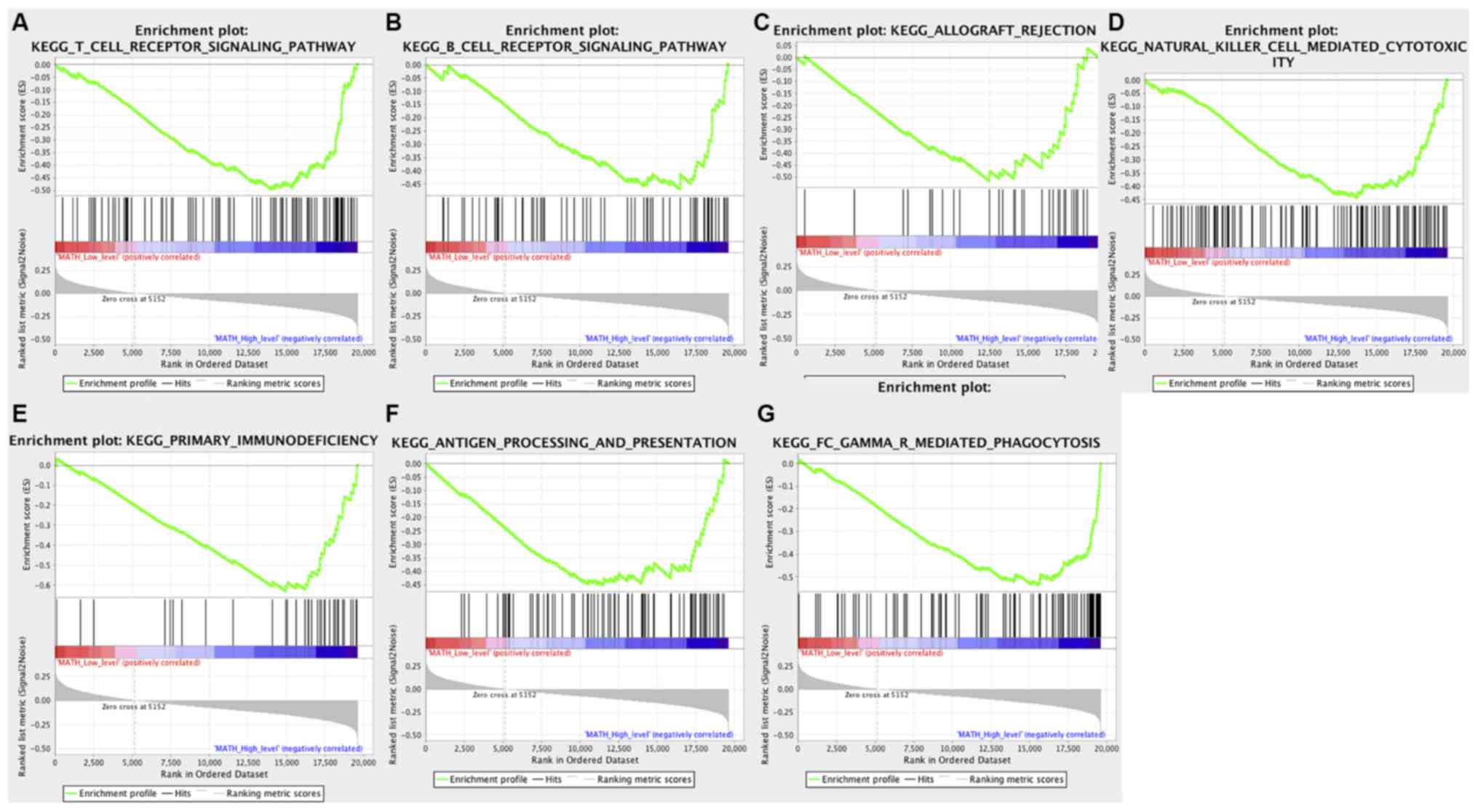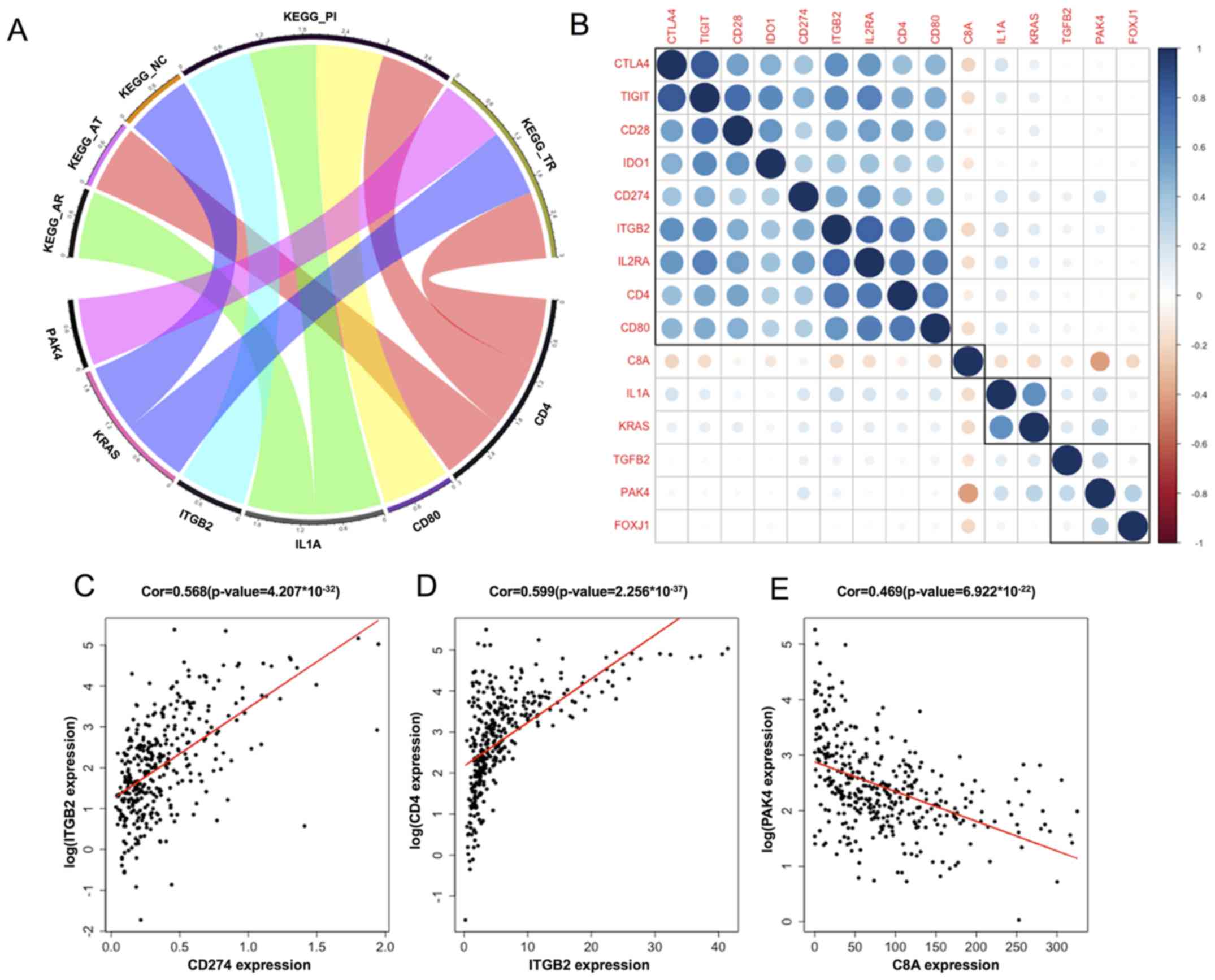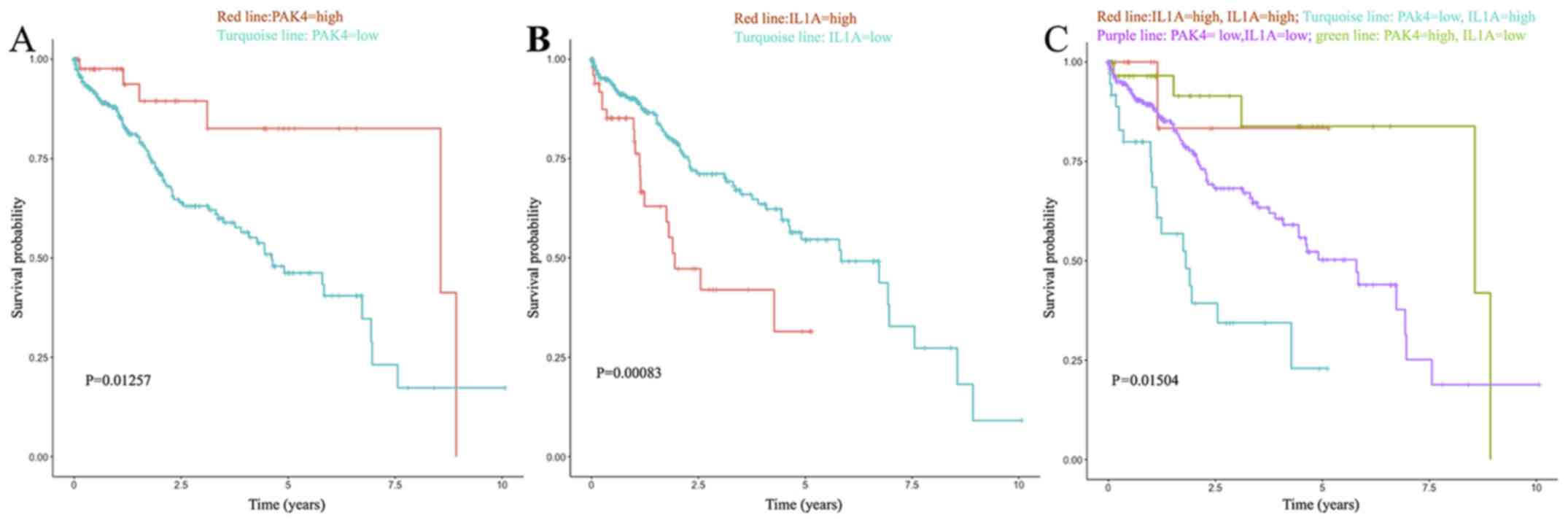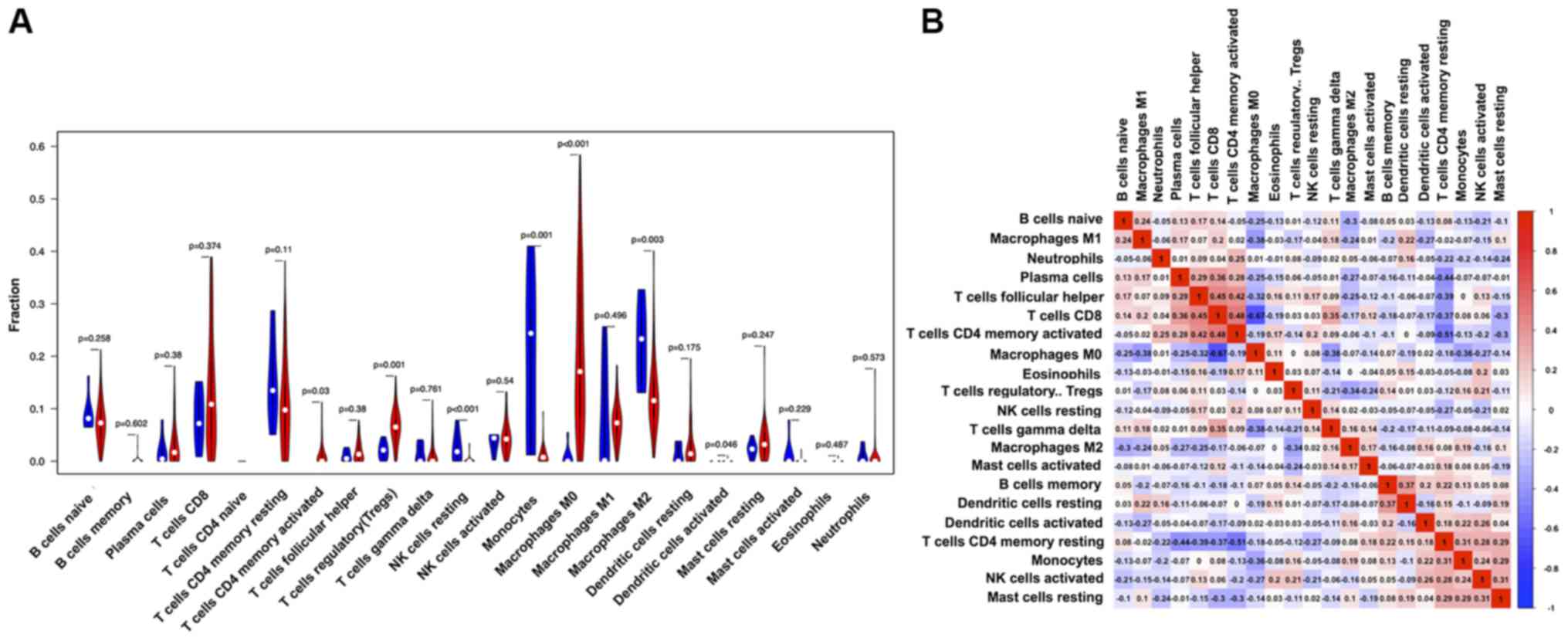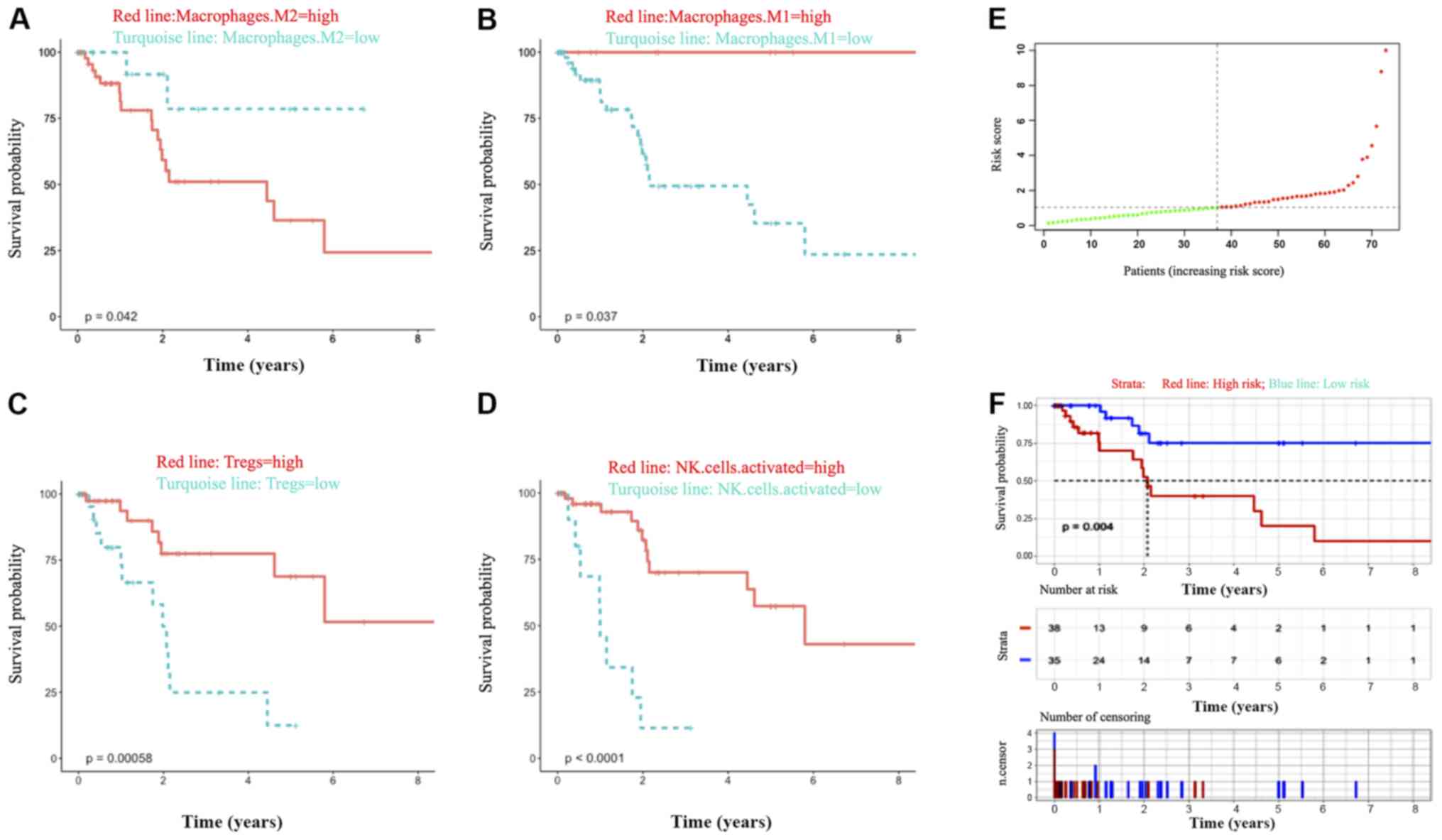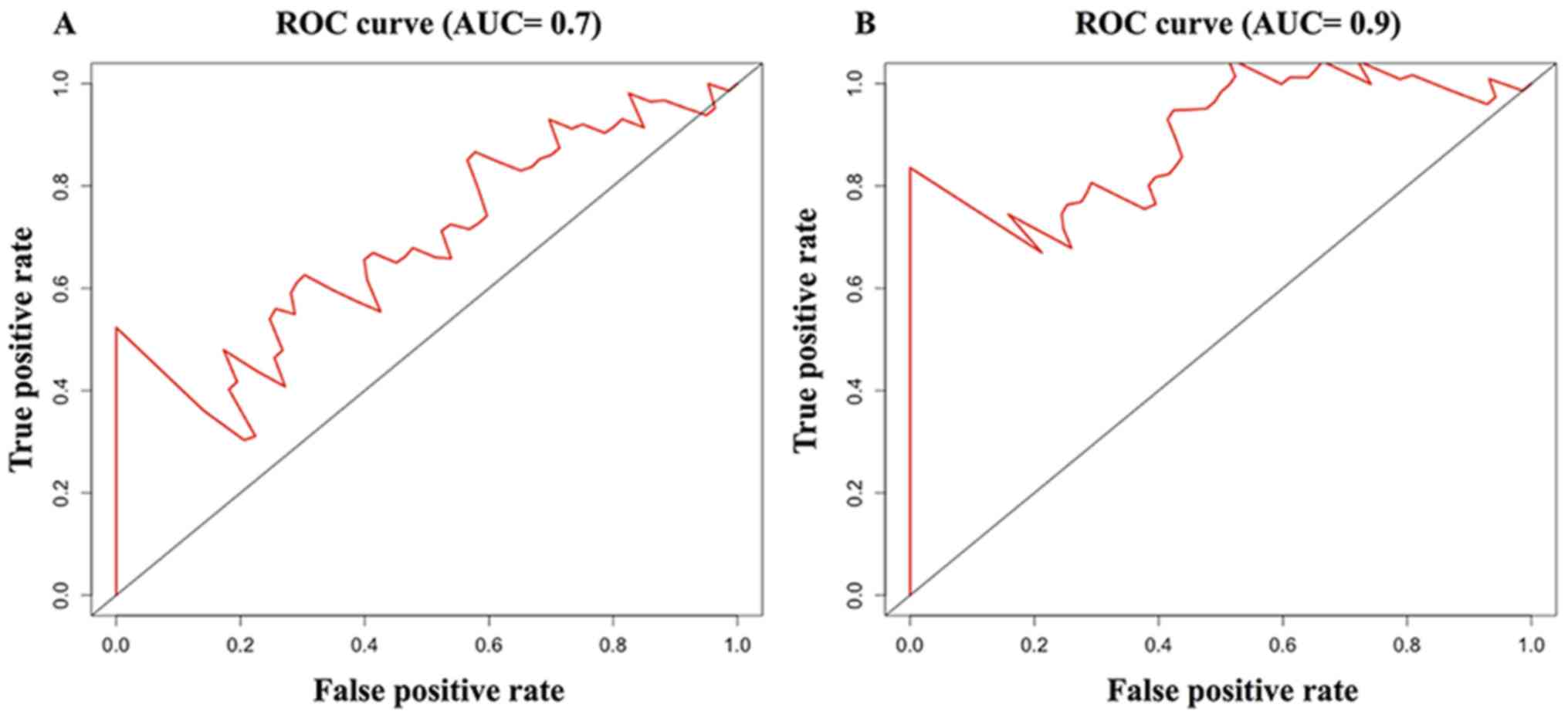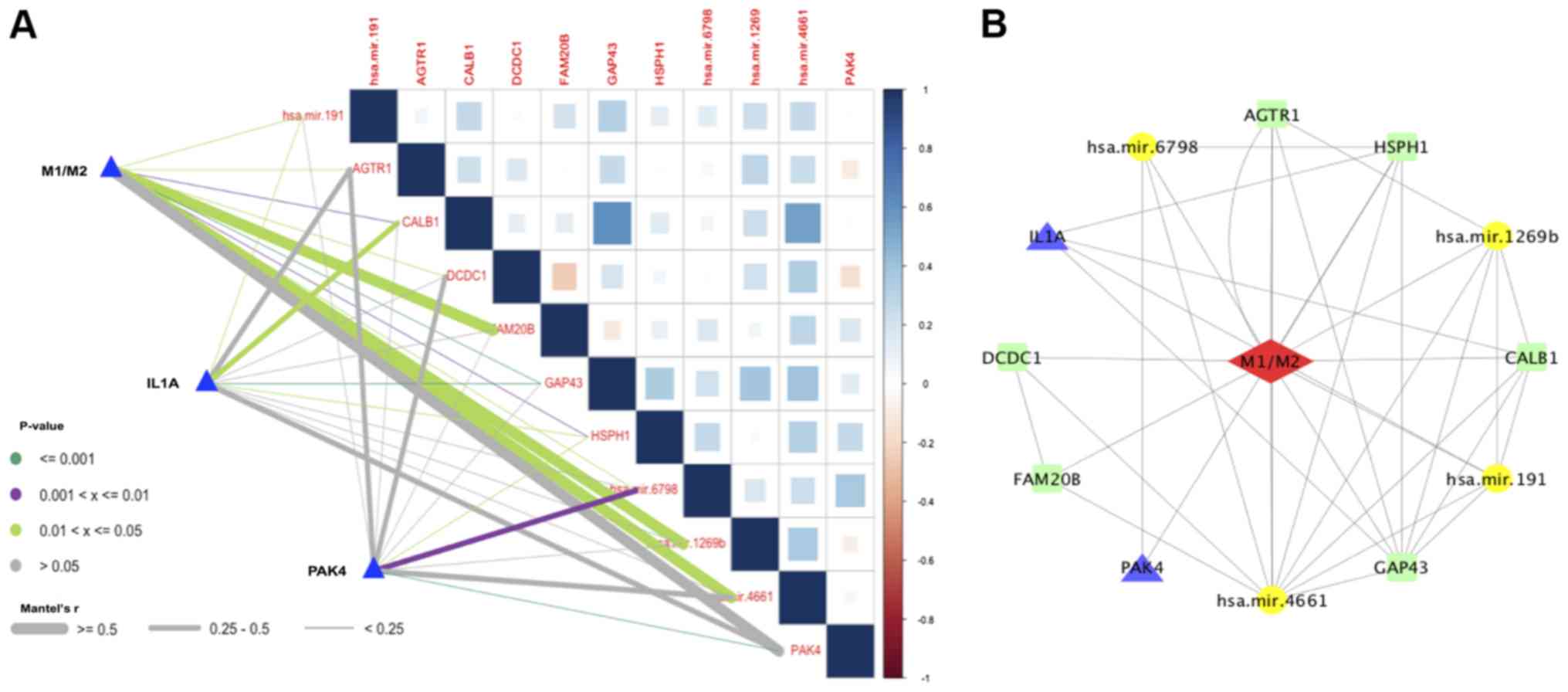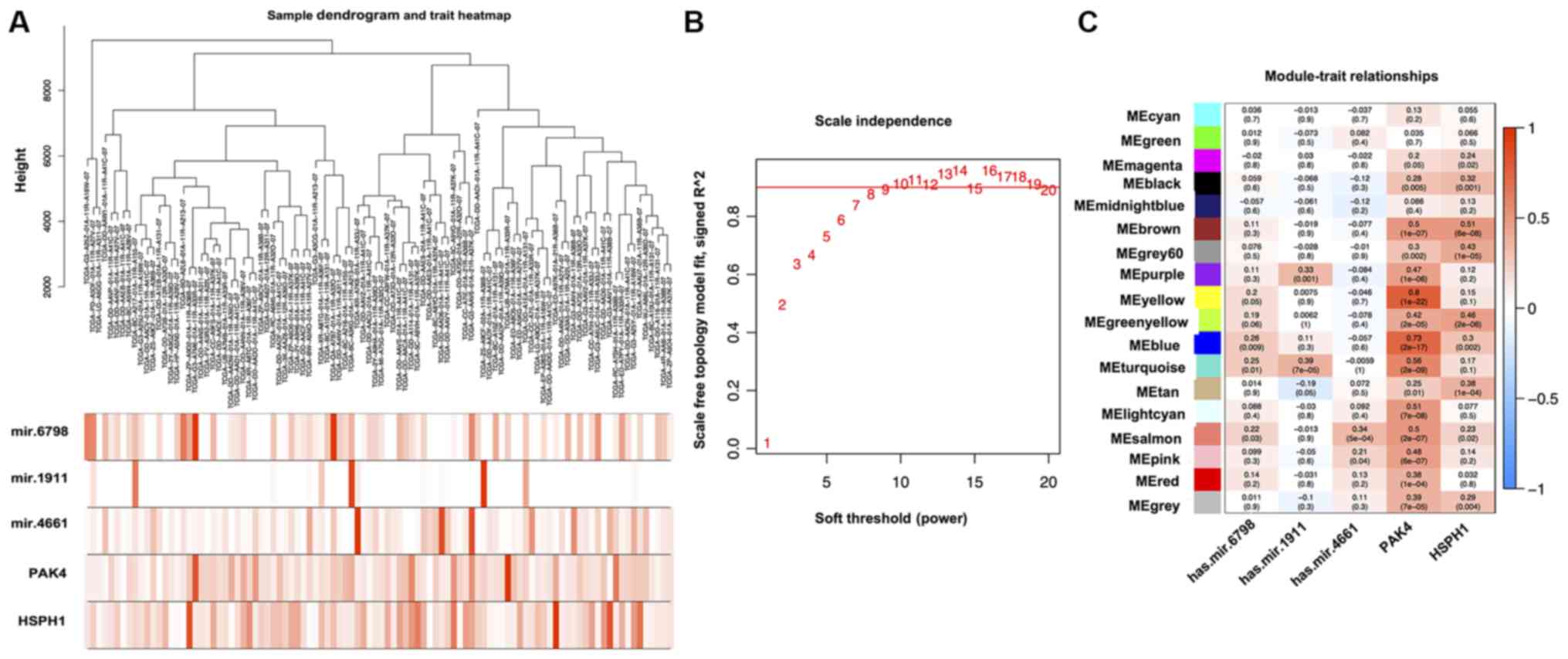|
1
|
Nault JC, Ningarhari M, Rebouissou S and
Zucman-Rossi J: The role of telomeres and telomerase in cancer. Nat
Rev Gastroenterol Hepatol. 16:544–558. 2019. View Article : Google Scholar : PubMed/NCBI
|
|
2
|
Kudo M: Systemic therapy for
hepatocellular carcinoma: Latest advances. Cancers (Basel).
10:4122018. View Article : Google Scholar
|
|
3
|
Ricke J, Klumpen HJ, Amthauer H,
Bargellini I, Bartenstein P, de Toni EN, Gasbarrini A, Pech M,
Peck-Radosavljevic M, Popovič P, et al: Impact of combined
selective internal radiation therapy and sorafenib on survival in
advanced hepatocellular carcinoma. J Hepatol. 71:1164–1174. 2019.
View Article : Google Scholar : PubMed/NCBI
|
|
4
|
Moehler M, Heo J, Lee HC, Tak WY, Chao Y,
Paik SW, Yim HJ, Byun KS, Baron A, Ungerechts G, et al:
Vaccinia-based oncolytic immunotherapy Pexastimogene Devacirepvec
in patients with advanced hepatocellular carcinoma after sorafenib
failure: A randomized multicenter Phase IIb trial (TRAVERSE).
Oncoimmunology. 8:16158172019. View Article : Google Scholar : PubMed/NCBI
|
|
5
|
Topalian SL, Hodi FS, Brahmer JR,
Gettinger SN, Smith DC, McDermott DF, Powderly JD, Sosman JA,
Atkins MB, Leming PD, et al: Five-year survival and correlates
among patients with advanced melanoma, renal cell carcinoma, or
Non-small cell lung cancer treated with nivolumab. JAMA Oncol.
5:1411–1420. 2019. View Article : Google Scholar
|
|
6
|
Qazi MA, Vora P, Venugopal C, Sidhu SS,
Moffat J, Swanton C and Singh SK: Intratumoral heterogeneity:
Pathways to treatment resistance and relapse in human glioblastoma.
Ann Oncol. 28:1448–1456. 2017. View Article : Google Scholar : PubMed/NCBI
|
|
7
|
McDonald KA, Kawaguchi T, Qi Q, Peng X,
Asaoka M, Young J, Opyrchal M, Yan L, Patnaik S, Otsuji E and
Takabe K: Tumor heterogeneity correlates with less immune response
and worse survival in breast cancer patients. Ann Surg Oncol.
26:2191–2199. 2019. View Article : Google Scholar : PubMed/NCBI
|
|
8
|
Wang Z, Chen J, Hu J, Zhang H, Xu F, He W,
Wang X, Li M, Lu W, Zeng G, et al: cGAS/STING axis mediates a
topoisomerase II inhibitor-induced tumor immunogenicity. J Clin
Invest. 129:4850–4862. 2019. View Article : Google Scholar : PubMed/NCBI
|
|
9
|
Lindström LS, Yau C, Czene K, Thompson CK,
Hoadley KA, Van't Veer LJ, Balassanian R, Bishop JW, Carpenter PM,
Chen YY, et al: Intratumor heterogeneity of the estrogen receptor
and the long-term risk of fatal Breast cancer. J Natl Cancer Inst.
110:726–733. 2018. View Article : Google Scholar : PubMed/NCBI
|
|
10
|
Nassar D and Blanpain C: Cancer stem
cells: Basic concepts and therapeutic implications. Annu Rev
Pathol. 11:47–76. 2016. View Article : Google Scholar : PubMed/NCBI
|
|
11
|
Zhang J, Fujimoto J, Zhang J, Wedge DC,
Song X, Zhang J, Seth S, Chow CW, Cao Y, Gumbs C, et al: Intratumor
heterogeneity in localized lung adenocarcinomas delineated by
multiregion sequencing. Science. 346:256–259. 2014. View Article : Google Scholar : PubMed/NCBI
|
|
12
|
Jackson CM, Choi J and Lim M: Mechanisms
of immunotherapy resistance: Lessons from glioblastoma. Nat
Immunol. 20:1100–1109. 2019. View Article : Google Scholar : PubMed/NCBI
|
|
13
|
Zhang Q, Lou Y, Yang J, Wang J, Feng J,
Zhao Y, Wang L, Huang X, Fu Q, Ye M, et al: Integrated multiomic
analysis reveals comprehensive tumour heterogeneity and novel
immunophenotypic classification in hepatocellular carcinomas. Gut.
68:2019–2031. 2019. View Article : Google Scholar : PubMed/NCBI
|
|
14
|
Mroz EA and Rocco JW: MATH, a novel
measure of intratumor genetic heterogeneity, is high in
poor-outcome classes of head and neck squamous cell carcinoma. Oral
Oncol. 49:211–215. 2013. View Article : Google Scholar : PubMed/NCBI
|
|
15
|
Rajput A, Bocklage T, Greenbaum A, Lee JH
and Ness SA: Mutant-allele tumor heterogeneity scores correlate
with risk of metastases in colon cancer. Clin Colorectal Cancer.
16:e165–e170. 2017. View Article : Google Scholar : PubMed/NCBI
|
|
16
|
Wang Y, Feng W and Liu P: Genomic pattern
of intratumor heterogeneity predicts the risk of progression in
early stage diffuse large B-cell lymphoma. Carcinogenesis.
40:1427–1434. 2019. View Article : Google Scholar : PubMed/NCBI
|
|
17
|
Yarchoan M, Xing D, Luan L, Xu H, Sharma
RB, Popovic A, Pawlik TM, Kim AK, Zhu Q, Jaffee EM, et al:
Characterization of the immune microenvironment in hepatocellular
carcinoma. Clin Cancer Res. 23:7333–7339. 2017. View Article : Google Scholar : PubMed/NCBI
|
|
18
|
Nagarsheth N, Wicha MS and Zou W:
Chemokines in the cancer microenvironment and their relevance in
cancer immunotherapy. Nat Rev Immunol. 17:559–572. 2017. View Article : Google Scholar : PubMed/NCBI
|
|
19
|
Atretkhany KSN, Drutskaya MS, Nedospasov
SA, Grivennikov SI and Kuprash DV: Chemokines, cytokines and
exosomes help tumors to shape inflammatory microenvironment.
Pharmacol Ther. 168:98–112. 2016. View Article : Google Scholar : PubMed/NCBI
|
|
20
|
Alifano M, Mansuet-Lupo A, Lococo F, Roche
N, Bobbio A, Canny E, Schussler O, Dermine H, Régnard JF, Burroni
B, et al: Systemic inflammation, nutritional status and tumor
immune microenvironment determine outcome of resected non-small
cell lung cancer. PLoS One. 9:e1069142014. View Article : Google Scholar : PubMed/NCBI
|
|
21
|
Wang L, Zhu B, Zhang M and Wang X: Roles
of immune microenvironment heterogeneity in therapy-associated
biomarkers in lung cancer. Semin Cell Dev Biol. 64:90–97. 2017.
View Article : Google Scholar : PubMed/NCBI
|
|
22
|
Newman AM, Liu CL, Green MR, Gentles AJ,
Feng W, Xu Y, Hoang CD, Diehn M and Alizadeh AA: Robust enumeration
of cell subsets from tissue expression profiles. Nat Methods.
12:453–457. 2015. View Article : Google Scholar : PubMed/NCBI
|
|
23
|
Ye L, Zhang T, Kang Z, Guo G, Sun Y, Lin
K, Huang Q, Shi X, Ni Z, Ding N, et al: Tumor-infiltrating immune
cells act as a marker for prognosis in colorectal cancer. Front
Immunol. 10:23682019. View Article : Google Scholar : PubMed/NCBI
|
|
24
|
Chen H, Chong W, Teng C, Yao Y, Wang X and
Li X: The immune response-related mutational signatures and driver
genes in non-small-cell lung cancer. Cancer Sci. 110:2348–2356.
2019.PubMed/NCBI
|
|
25
|
Subramanian A, Tamayo P, Mootha VK,
Mukherjee S, Ebert BL, Gillette MA, Paulovich A, Pomeroy SL, Golub
TR, Lander ES and Mesirov JP: Gene set enrichment analysis: A
knowledge-based approach for interpreting genome-wide expression
profiles. Proc Natl Acad Sci USA. 102:15545–15550. 2005. View Article : Google Scholar : PubMed/NCBI
|
|
26
|
Shannon P, Markiel A, Ozier O, Baliga NS,
Wang JT, Ramage D, Amin N, Schwikowski B and Ideker T: Cytoscape: A
software environment for integrated models of biomolecular
interaction networks. Genome Res. 13:2498–2504. 2003. View Article : Google Scholar : PubMed/NCBI
|
|
27
|
Langfelder P and Horvath S: WGCNA: An R
package for weighted correlation. network analysis. BMC
Bioinformatics. 9:5592008. View Article : Google Scholar : PubMed/NCBI
|
|
28
|
Hu K and Chen F: Identification of
significant pathways in gastric cancer based on protein-protein
interaction networks and cluster analysis. Genet Mol Biol.
35:701–708. 2012. View Article : Google Scholar : PubMed/NCBI
|
|
29
|
Komohara Y, Fujiwara Y, Ohnishi K and
Takeya M: Tumor-associated macrophages: Potential therapeutic
targets for anti-cancer therapy. Adv Drug Deliv Rev. 99:180–185.
2016. View Article : Google Scholar : PubMed/NCBI
|
|
30
|
Prieto J, Melero I and Sangro B:
Immunological landscape and immunotherapy of hepatocellular
carcinoma. Nat Rev Gastroenterol Hepatol. 12:681–700. 2015.
View Article : Google Scholar : PubMed/NCBI
|
|
31
|
McGranahan N, Furness AJ, Rosenthal R,
Ramskov S, Lyngaa R, Saini SK, Jamal-Hanjani M, Wilson GA, Birkbak
NJ, Hiley CT, et al: Clonal neoantigens elicit T cell
immunoreactivity and sensitivity to immune checkpoint blockade.
Science. 351:1463–1469. 2016. View Article : Google Scholar : PubMed/NCBI
|
|
32
|
Mannino MH, Zhu Z, Xiao H, Bai Q,
Wakefield MR and Fang Y: The paradoxical role of IL-10 in immunity
and cancer. Cancer Lett. 367:103–107. 2015. View Article : Google Scholar : PubMed/NCBI
|
|
33
|
Lippitz BE: Cytokine patterns in patients
with cancer: A systematic review. Lancet Oncol. 14:e218–e228. 2013.
View Article : Google Scholar : PubMed/NCBI
|
|
34
|
Dinarello CA: Overview of the IL-1 family
in innate inflammation and acquired immunity. Immunol Rev.
281:8–27. 2018. View Article : Google Scholar : PubMed/NCBI
|
|
35
|
Apte RN, Dotan S, Elkabets M, White MR,
Reich E, Carmi Y, Song X, Dvozkin T, Krelin Y and Voronov E: The
involvement of IL-1 in tumorigenesis, tumor invasiveness,
metastasis and tumor-host interactions. Cancer Metastasis Rev.
25:387–408. 2006. View Article : Google Scholar : PubMed/NCBI
|
|
36
|
Li Y, Jia S and Dai W: Fisetin modulates
human oral squamous cell carcinoma proliferation by Blocking
PAK4 signaling pathways. Drug Des Devel Ther.
14:773–782. 2020. View Article : Google Scholar : PubMed/NCBI
|
|
37
|
Costa TDF, Zhuang T, Lorent J, Turco E,
Olofsson H, Masia-Balague M, Zhao M, Rabieifar P, Robertson N,
Kuiper R, et al: PAK4 suppresses RELB to prevent senescence-like
growth arrest in breast cancer. Nat Commun. 10:35892019. View Article : Google Scholar : PubMed/NCBI
|
|
38
|
Xu HT, Lai WL, Liu HF, Wong LLY, Ng IOL
and Ching YP: PAK4 phosphorylates p53 at serine 215 to promote
liver cancer metastasis. Cancer Res. 76:5732–5742. 2016. View Article : Google Scholar : PubMed/NCBI
|
|
39
|
Li X, Ke Q, Li Y, Liu F, Zhu G and Li F:
DGCR6L, a novel PAK4 interaction protein, regulates PAK4-mediated
migration of human gastric cancer cell via LIMK1. Int J Biochem
Cell Biol. 42:70–79. 2010. View Article : Google Scholar : PubMed/NCBI
|
|
40
|
Rohr-Udilova N, Klinglmuller F,
Schulte-Hermann R, Stift J, Herac M, Salzmann M, Finotello F,
Timelthaler G, Oberhuber G, Pinter M, et al: Deviations of the
immune cell landscape between healthy liver and hepatocellular
carcinoma. Sci Rep. 8:62202018. View Article : Google Scholar : PubMed/NCBI
|
|
41
|
Foerster F, Hess M, Gerhold-Ay A,
Marquardt JU, Becker D, Galle PR, Schuppan D, Binder H and Bockamp
E: The immune contexture of hepatocellular carcinoma predicts
clinical outcome. Sci Rep. 8:53512018. View Article : Google Scholar : PubMed/NCBI
|
|
42
|
Zong Z, Zou J, Mao R, Ma C, Li N, Wang J,
Wang X, Zhou H, Zhang L and Shi Y: M1 Macrophages induce PD-L1
expression in hepatocellular carcinoma cells through IL-1β
signaling. Front Immunol. 10:16432019. View Article : Google Scholar : PubMed/NCBI
|
|
43
|
Lin EY, Li JF, Gnatovskiy L, Deng Y, Zhu
L, Grzesik DA, Qian H, Xue XN and Pollard JW: Macrophages regulate
the angiogenic switch in a mouse model of breast cancer. Cancer
Res. 66:11238–11246. 2006. View Article : Google Scholar : PubMed/NCBI
|
|
44
|
Qian B, Deng Y, Im JH, Muschel RJ, Zou Y,
Li J, Lang RA and Pollard JW: A distinct macrophage population
mediates metastatic breast cancer cell extravasation, establishment
and growth. PLoS One. 4:e65622009. View Article : Google Scholar : PubMed/NCBI
|
|
45
|
Wanderley CW, Colón DF, Luiz JP, Oliveira
FF, Viacava PR, Leite CA, Pereira JA, Silva CM, Silva CR, Silva RL,
et al: Paclitaxel reduces tumor growth by reprogramming
tumor-associated macrophages to an M1 profile in a TLR4-dependent
manner. Cancer Res. 78:5891–5900. 2018.PubMed/NCBI
|
|
46
|
Helm O, Held-Feindt J, Grage-Griebenow E,
Reiling N, Ungefroren H, Vogel I, Krüger U, Becker T, Ebsen M,
Röcken C, et al: Tumor-associated macrophages exhibit pro- and
anti-inflammatory properties by which they impact on pancreatic
tumorigenesis. Int J Cancer. 135:843–861. 2014. View Article : Google Scholar : PubMed/NCBI
|
|
47
|
Wang H, Wang X, Li X, Fan Y, Li G, Guo C,
Zhu F, Zhang L and Shi Y: CD68+HLA-DR+ M1-like macrophages promote
motility of HCC cells via NF-κB/FAK pathway. Cancer Lett.
345:91–99. 2014. View Article : Google Scholar : PubMed/NCBI
|
|
48
|
Wang N, Liang H and Zen K: Molecular
mechanisms that influence the macrophage M1-M2 polarization
balance. Front Immunol. 5:6142014. View Article : Google Scholar : PubMed/NCBI
|
|
49
|
Yuan A, Hsiao YJ, Chen HY, Chen HW, Ho CC,
Chen YY, Liu YC, Hong TH, Yu SL, Chen JJ and Yang PC: Opposite
effects of M1 and M2 macrophage subtypes on lung cancer
progression. Sci Rep. 5:142732015. View Article : Google Scholar : PubMed/NCBI
|
|
50
|
Bardi GT, Smith MA and Hood JL: Melanoma
exosomes promote mixed M1 and M2 macrophage polarization. Cytokine.
105:63–72. 2018. View Article : Google Scholar : PubMed/NCBI
|
|
51
|
Imai K, Matsuyama S, Miyake S, Suga K and
Nakachi K: Natural cytotoxic activity of peripheral-blood
lymphocytes and cancer incidence: An 11-year follow-up study of a
general population. Lancet. 356:1795–1799. 2000. View Article : Google Scholar : PubMed/NCBI
|
|
52
|
Quinn SR and O'Neill LA: The role of
microRNAs in the control and mechanism of action of IL-10. Curr Top
Microbiol Immunol. 380:145–155. 2014.PubMed/NCBI
|
|
53
|
Tian F, Yu C, Wu M, Wu X, Wan L and Zhu X:
MicroRNA-191 promotes hepatocellular carcinoma cell proliferation
by has_circ_0000204/miR-191/KLF6 axis. Cell Prolif. 52:e126352019.
View Article : Google Scholar : PubMed/NCBI
|
|
54
|
Kong XX, Lv YR, Shao LP, Nong XY, Zhang
GL, Zhang Y, Fan HX, Liu M, Li X and Tang H: HBx-induced MiR-1269b
in NF-κB dependent manner upregulates cell division cycle 40
homolog (CDC40) to promote proliferation and migration in hepatoma
cells. J Transl Med. 14:1892016. View Article : Google Scholar : PubMed/NCBI
|
|
55
|
Berthenet K, Boudesco C, Collura A, Svrcek
M, Richaud S, Hammann A, Causse S, Yousfi N, Wanherdrick K, Duplomb
L, et al: Extracellular HSP110 skews macrophage polarization in
colorectal cancer. Oncoimmunology. 5:e11702642016. View Article : Google Scholar : PubMed/NCBI
|
|
56
|
Dorard C, de Thonel A, Collura A, Marisa
L, Svrcek M, Lagrange A, Jego G, Wanherdrick K, Joly AL, Buhard O,
et al: Expression of a mutant HSP110 sensitizes colorectal cancer
cells to chemotherapy and improves disease prognosis. Nat Med.
17:1283–1289. 2011. View Article : Google Scholar : PubMed/NCBI
|
|
57
|
Wang XY, Li Y, Manjili MH, Repasky EA,
Pardoll DM and Subjeck JR: Hsp110 over-expression increases the
immunogenicity of the murine CT26 colon tumor. Cancer Immunol
Immunother. 51:311–319. 2002. View Article : Google Scholar : PubMed/NCBI
|
|
58
|
Lu WT, Lemonidis K, Drayton RM and
Nouspikel T: The Fanconi anemia pathway is downregulated upon
macrophage differentiation through two distinct mechanisms. Cell
Cycle. 10:3300–3310. 2011. View Article : Google Scholar : PubMed/NCBI
|
|
59
|
Li J, Rao H, Jin C and Liu J: Involvement
of the Toll-like receptor/Nitric oxide signaling pathway in the
pathogenesis of cervical cancer caused by high-risk human
papillomavirus infection. Biomed Res Int.
2017:78302622017.PubMed/NCBI
|
|
60
|
Hu HL, Shiflett LA, Kobayashi M, Chao MV,
Wilson AC, Mohr I and Huang TT: TOP2β-dependent nuclear DNA damage
shapes extracellular growth factor responses via dynamic AKT
phosphorylation to control virus latency. Mol Cell. 74:466–480.e4.
2019. View Article : Google Scholar : PubMed/NCBI
|
|
61
|
Romick-Rosendale LE, Hoskins EE, Privette
Vinnedge LM, Foglesong GD, Brusadelli MG, Potter SS, Komurov K,
Brugmann SA, Lambert PF, Kimple RJ, et al: Defects in the fanconi
anemia pathway in head and neck cancer cells stimulate tumor cell
invasion through DNA-PK and Rac1 signaling. Clin Cancer Res.
22:2062–2073. 2016. View Article : Google Scholar : PubMed/NCBI
|















